Discovering the Liwa Region: History, Culture, and Growth
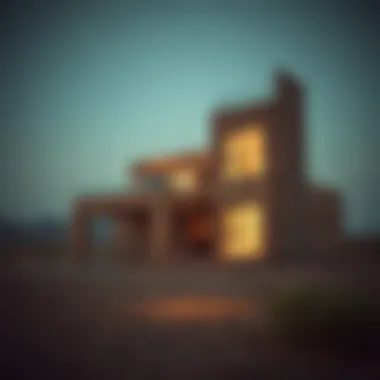
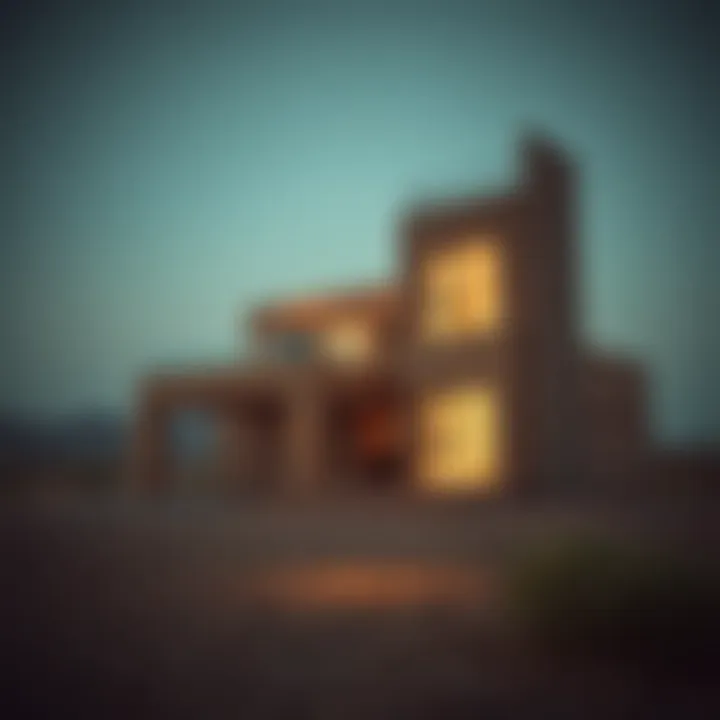
Intro
The Liwa region in the United Arab Emirates is a place that brims with stories, both old and new. Nestled within the heart of the desert, it offers a striking contrast to the bustling cities nearby. This vast expanse is marked by towering dunes that shift with the winds, giving it a dynamic landscape that captivates the eyes.
Historically, Liwa has been a crucial player in the UAE's narrative. It was once a stop for traders and nomads, serving as a pivotal point for commerce. Even now, echoes of its rich past can be felt in the cultural practices and traditions that persist among its inhabitants.
While its history is important, what makes Liwa truly exciting is how it is evolving. There’s a growing economic potential here, underpinned by modern development initiatives that are reshaping the region. Investors are beginning to take note, seeing Liwa not just as a beautiful destination but also a promising site for investment.
In this article, we will take a closer look at various facets of the Liwa region. We will dive into market trends that illuminate current economic activity and future predictions. Furthermore, we will explore effective investment strategies that can serve as a guide for those interested in this emerging market. Whether you're a potential investor, an expatriate looking to settle, or a cultural enthusiast wanting to know more about this unique area, we aim to arm you with the insights needed to navigate the opportunities and challenges inherent in this fascinating region.
Stay tuned as we delve into the intricate layers that make Liwa a compelling subject of exploration.
Foreword to the Liwa Region
The Liwa region encapsulates a unique blend of rich culture and striking landscapes within the larger framework of the United Arab Emirates (UAE). This remote area, often overshadowed by the glitzy image of cities like Abu Dhabi and Dubai, is not just a desert; it is a microcosm of history, tradition, and potential waiting to be explored. A deep dive into Liwa reveals why understanding this region is essential—not just for its residents, but also for investors, expatriates, and cultural enthusiasts alike.
One of the primary benefits of exploring Liwa lies in its geographically diverse landscape, which ranges from vast sand dunes to lush oases. This geographical variety offers more than just picturesque scenery; it creates a unique microclimate that fosters local agriculture and tourism, particularly in areas such as date farming and eco-tourism.
Geographical Overview
Liwa is located in the western region of the UAE, characterized by its extensive sand dunes, known as the Rub' al Khali or the Empty Quarter, which ranks among the largest continuous sand deserts in the world. The topography of this region is not only a sight to behold but also plays a crucial role in the local climate and ecology.
- Dune Formations: The dunes, some of which soar up to 250 meters, exhibit an array of textures and colors, especially at sunrise and sunset.
- Oasis Areas: These fertile pockets, such as the Liwa Oasis, are pivotal for agriculture, allowing activities like date cultivation to thrive, providing both sustenance and economic opportunities.
The geographical and climatic conditions are invaluable for those considering agricultural ventures or eco-tourism initiatives in the region. Understanding these environmental factors is key in optimizing investments.
Cultural Significance
Liwa’s cultural identity is steeped in its Bedouin heritage. The traditions and customs of the local tribes, which have persisted for generations, offer rich insights into the history of the Arab world. The cultural importance of Liwa extends beyond the surface and touches upon values of hospitality, resilience, and community.
- Festivals and Traditions: Annual events, such as the Liwa Date Festival, highlight the region's rich agricultural heritage while celebrating the cultural practices of local inhabitants.
- Architectural Features: The traditional mud-brick houses and forts scattered across the region frequently tell stories of the past, showcasing designs that are both practical and reflective of the harsh desert environment.
- Language and Art: The distinct dialect and traditional crafts, such as weaving and pottery, reflect the ongoing connection to the past and the importance of preserving this identity.
Engaging with the cultural landscape of Liwa not only enriches the experience for visitors but also presents opportunities for businesses and individuals looking to invest in local crafts, tourism, and sustainable agriculture initiatives.
The Liwa region serves as a key area for those wanting to immerse themselves in the authentic experiences of the UAE, making it a vital subject of exploration.
Historical Context of Liwa
The historical context of Liwa offers a profound lens through which to understand the region's significance within the broader narrative of the United Arab Emirates. This narrative is not just dental; it forms the bedrock of the present-day cultural, economic, and social landscape. Tracing back the layers of history, Liwa reveals itself as a tapestry of ancient civilizations, trade routes, and transformations that have shaped its identity over the centuries. This section will explore the ancient settlements that laid the foundational stones of culture in the region, as well as the colonial influences that intertwined with local customs and governance.
Ancient Settlements
Ancient settlements in Liwa provide a remarkable glimpse into the earliest forms of community life in the region. Archaeological discoveries, such as pottery shards, remnants of irrigation systems, and the layout of dwellings suggest that humans have inhabited this area for thousands of years. The region was strategically situated along ancient trade routes, allowing for the exchange of goods and ideas between neighboring cultures. The discovery of the Liwa Oasis was particularly crucial, as this lush area amidst the arid surroundings enabled agricultural practices and supported larger populations.
Furthermore, the ancient settlers utilized the natural resources of the region to create self-sustaining communities. Their innovative approach to water management through falaj systems exemplifies how they adapted to their environment. These ancient practices of cultivating date palms and other crops laid the groundwork for what later became a thriving agricultural hub.
While many inhabitants relied on agriculture and trade, some ventured into animal husbandry. This duality of life, between farming and herding, forged a culturally rich community. These practices exemplified resilience, showcasing how early Emiratis were not just survivors but individuals attuned to the rhythms of their environment. It’s worth noting that these settlements fostered a strong community ethos, which continues to resonate today, deeply influencing the social fabric of contemporary Liwa.
Colonial Influences
The colonial influences in Liwa mark a pivotal shift in its historical narrative, as foreign powers began to impose their governance and culture upon the region. During the late 18th and early 19th centuries, the area saw increasing interest from various European colonial powers. This shift brought with it not only economic changes but also social and political transformations. The British, in particular, played a crucial role in shaping the region’s connectivity to global trade networks.
As colonial interests heightened, so too did conflicts over resource control, leading to significant disruptions in local governance. However, interestingly enough, these challenges also acted as a catalyst for local unity. The tribes of Liwa often banded together in a bid to maintain their sovereignty amid external pressures. Their collective resistance is seen as a defining moment in the realization of a national identity within the UAE.
The imprint of colonialism remains evident in Liwa's architecture and urban planning, with edifices reflecting foreign styles mingling with traditional Emirati motifs. The Fort of Liwa, which stands as a historic monument, showcases this fusion beautifully. The colonial period also sowed the seeds for modern education and healthcare initiatives, altering the landscape of social services in ways that persist today. Colloquially, one might say that these changes were a double-edged sword, revealing both the perils of foreign dominion and the opportunities for growth.
In summary, the historical context of Liwa is marked by its ancient settlements that underscore a long-standing relationship with the land and community, coupled with colonial influences that developed the region’s identity in complex ways. Understanding these layers provides valuable insights that are instrumental for those looking to invest in or engage with Liwa’s cultural and economic landscape today.
The historical tapestry of Liwa weaves together stories of resilience and adaptation, illuminating routes toward future growth and development.
Whether you're an investor evaluating opportunities within the region, or an expatriate keen to delve into the local ethos, grasping this rich historical backdrop is essential to navigating the vibrant waters of Liwa.
Natural Environment of Liwa
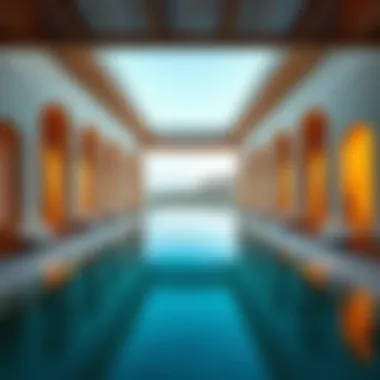

The natural environment of the Liwa region is a rich tapestry woven from diverse ecosystems, unique geological features, and distinct climate conditions. Understanding these elements is crucial for anyone looking to engage with the region, whether for investment, settlement, or simply to appreciate its natural beauty. The rich biodiversity and ecological balance in Liwa offer significant benefits, making it not just an attractive locale for tourists, but also for potential investors keen on sustainable projects.
Diverse Ecosystems
Liwa is home to a variety of ecosystems that thrive in the region’s arid climate. The sweeping dunes of the Rub' al Khali, or Empty Quarter, are perhaps the most iconic feature. These stunning sand formations are not just a visual marvel; they support a surprising range of life. For instance, specific vegetation like Acacia and Camel Thorn can be found here, playing an essential role in stabilizing the sand and providing habitat for various animal species.
In addition to the sandy expanses, there are oases scattered throughout Liwa, such as the famous Liwa Oasis. These green patches have historically provided sustenance and refuge, showcasing palm date cultivation and other agricultural practices that have thrived for centuries. The biodiversity in these oases includes numerous bird species, which contribute to the region's ecological fabric.
Farming practices here leverage the natural water table, making agriculture sustainable even in a desert setting. The integration of traditional farming methods with modern techniques opens doors for investors interested in ecological agriculture or agritech solutions.
Most importantly, the preservation of these ecosystems is vital. The balance between development and conservation must be navigated carefully, ensuring that the natural beauty and biodiversity that make Liwa unique are not compromised.
Climate Patterns
Navigating the climate of Liwa reveals a pattern that is as dry and unforgiving as it is essential for understanding the dynamics of life in this region. The summer months can be blisteringly hot, with temperatures soaring above 50°C. However, it's not just the heat; the region experiences a significant thermal oscillation between night and day, where nighttime temperatures can drop drastically. This unique climate means that flora and fauna have developed adaptations to manage these harsh conditions.
Rainfall is scant, averaging between 50 to 100 mm annually, with most precipitation occurring in the winter months. This seasonal variability in rainfall significantly influences water availability, impacting agriculture and ecological resilience. Moreover, the presence of strong winds can lead to a phenomenon known as sandstorms, which, while challenging, also serve to redistribute nutrients across the landscape.
Understanding these climatic patterns is important for anyone contemplating investment in the region. Sustainable practices and technologies can greatly influence the effectiveness of agricultural projects and help mitigate the impacts of climate change on this delicate environment. A climate-aware approach is essential for fostering long-term growth without sacrificing the ecological integrity of Liwa.
"The unique climatic conditions of Liwa not only shape its environment but also dictate the economic opportunities available, particularly in sustainable agriculture and eco-tourism."
In summary, the natural environment of Liwa serves as both a challenge and an opportunity. Its ecosystems and climate patterns provide a rich backdrop for economic and cultural exploration, while also reminding us of the need for a responsible approach to development. Investors, organizations, and individuals alike should recognize these aspects as they delve deeper into what Liwa has to offer.
Economic Landscape of Liwa
The economic landscape of Liwa serves as a foundational pillar for its growth and development. With its rich resources and strategic location, Liwa presents a myriad of opportunities for investors and business enthusiasts alike. As part of the broader UAE economy, understanding Liwa's specific economic dynamics is crucial, particularly in the realms of agriculture, tourism, and the burgeoning oil and gas sector.
Agricultural Activities
Agriculture in Liwa is not just about farming; it's a tradition deeply rooted in the region’s culture. The local farmers have adapted their practices to the challenging desert environment, utilizing modern irrigation systems and organic farming techniques. Products like dates, vegetables, and even camel milk are cultivated here. The palm groves dotting the skyline are more than aesthetic; they symbolize sustenance and economic stability for the local communities.
The government supports agricultural initiatives through various subsidies and training programs to empower farmers with knowledge on sustainable practices. Not only does agriculture provide food security, but it also brings together a community spirit, fostering cooperation among farmers to improve overall productivity.
Tourism Development
Tourism is carving out a significant niche in the Liwa economy. With its dramatic sand dunes and cultural heritage, Liwa attracts not just local tourists, but also expatriates and international visitors eager to experience authentic Emirati culture. Activities like desert safaris, falconry, and traditional Bedouin camping are becoming increasingly popular.
Investments in infrastructure, such as hotels and visitor centers, have ushered in a new era of economic activity. Events like the Liwa Dates Festival showcase not only the region’s agricultural riches but also serve to promote local craft and culture. The blend of modern facilities with traditional experiences is poised to elevate Liwa into a leading tourist destination, enhancing job creation and local business growth.
Impact of Oil and Gas Industry
The oil and gas industry remains a backbone of the Liwa economy, driving substantial investment and development. The extraction and export of these resources have underpinned the region’s economic structure, providing revenues that support public services and infrastructure development. Major companies, including ADNOC, play a key role in the economic framework, promoting advanced technologies and environmental stewardship.
Yet, this dependence on hydrocarbons comes with its challenges. Fluctuations in oil prices can lead to economic vulnerabilities. The need for diversification is constantly at the forefront of discussions among policymakers and entrepreneurs. Efforts to invest in renewable energy and technology-driven sectors signify a shift towards a more resilient economic model for the future.
The intersection of agriculture, tourism, and the oil industry encapsulates a unique economic blend in Liwa, promising both growth and challenges ahead.
Architectural Features in Liwa
The architectural landscape of Liwa embodies a rich tapestry of cultural heritage, reflecting the region's history and the evolution of its society. The significance of this subject lies in understanding how the built environment not only serves functional purposes but also acts as a cultural repository. Architecture in Liwa stands as a testament to the values of community, tradition, and adaptation in the face of modernity. From ancient structures to contemporary designs, we delve into the myriad components that shape Liwa's architectural identity.
Traditional Emirati Architecture
Traditional Emirati architecture in Liwa showcases a harmonious blend of utility and aesthetic appeal. The use of natural materials like mud brick, palm fronds, and stone is prevalent, embodying a deep-rooted connection to the environment. These structures were designed with more than just practicality in mind. They reflect the cultural identity and social norms of the emirate.
- Barastis (tents): Historically, nomadic tribes used barastis, tent-like structures made from palm fronds, facilitating mobility and shelter in harsh desert conditions.
- Falaj systems: The architectural ingenuity of ancient irrigation systems allowed communities to thrive despite arid conditions, demonstrating the importance of water management in traditional Emirati life.
- Fortresses and watchtowers: Constructed for protection and surveillance, these buildings stand as symbols of resilience against historical invasions and raids.
The layout of traditional homes also emphasizes communal living, as families often inhabit clusters around a shared courtyard. This architectural choice fosters social connectivity, crucial for both familial and community ties. Traditional Emirati architecture, thus, is not just about physical structures; it's a reflection of a way of life that prioritizes closeness and cooperation among residents.
Modern Developments
In recent years, the architectural scene in Liwa has shifted, embracing modernity while striving to preserve its rich heritage. This blend of the old and new presents unique opportunities and challenges for developers, homeowners, and investors alike.
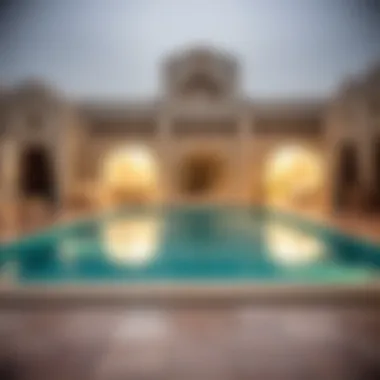
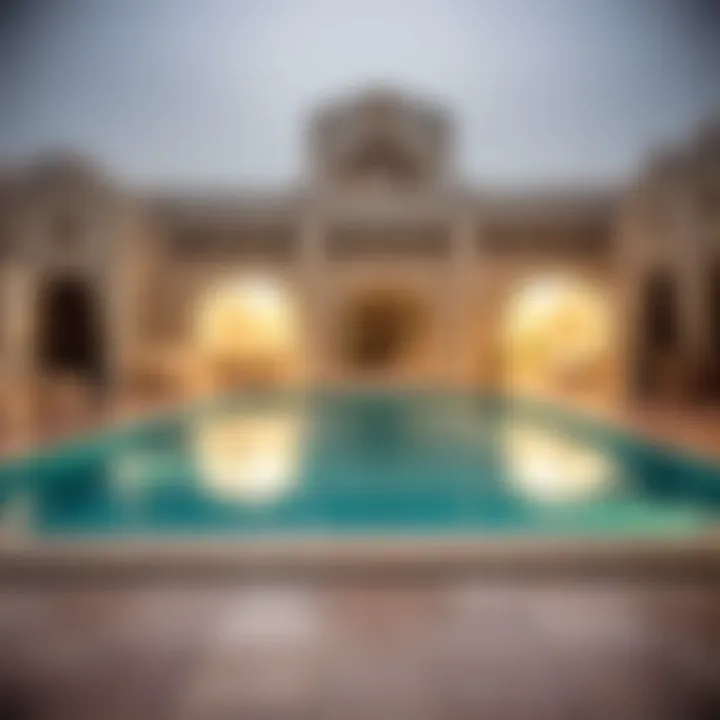
- Sustainable practices: Incorporating environmentally friendly materials and designs is becoming a focal point in modern architecture. For instance, energy-efficient technologies and renewable resources are increasingly applied to new build projects.
- Vertical expansion: With the growth of the population and interest from expatriates, there is a clear shift towards high-rise buildings and mixed-use developments, accommodating both residential and commercial needs. This can often be seen in burgeoning urban spaces emerging in and around Liwa.
- Cultural identity in new designs: Many contemporary buildings incorporate elements of traditional architecture, such as patterned facades reminiscent of local heritage, weaving the cultural narrative into modern designs. This approach not only honors history but also appeals to investors and residents who value authenticity and sustainability in urban development.
As the region grapples with balancing heritage and innovation, it faces the task of ensuring that new developments respect the architectural ethos of the past while meeting the demands of the present. The future architectural strategies will likely focus on creating a cohesive identity that integrates Liwa's rich traditions with forward-thinking designs.
"Architecture is the learned game, correct and magnificent, of forms assembled in the light."
— Le Corbusier
Liwa's architectural tapestry, rich with history and forward-thinking designs, presents a complex yet fascinating view of how the region continues to evolve while keeping its heart and soul intact.
For further exploration into the cultural and architectural heritage of the UAE, you may refer to Wikipedia and various educational resources that discuss this area in detail.
Cultural and Social Aspects
In the tapestry of Liwa's identity, its cultural and social aspects stand out with remarkable vibrancy and significance. The blend of tradition and modernity, shaped by the diverse populations that inhabit the region, offers a unique perspective into the values and everyday lives of its residents. This section aims to highlight the essence of these influences, exploring how they enrich the Liwa experience and impact the residents’ lives, ultimately fostering a tight-knit community atmosphere that is appealing to investors and expatriates alike.
Festivals and Events
Liwa is renowned for its lively festivals and events, which serve as the heartbeat of the local culture. These celebrations are not merely occasions of joy; they are profound manifestations of tradition and community spirit. Events like the Liwa Date Festival draw both locals and visitors, offering a platform for farmers to showcase the region’s sweetest dates, while also featuring crafts, food stalls, and captivating performances.
One can also observe the Liwa Camel Festival, a testament to the region's rich Bedouin heritage. This event does not only exhibit beautiful camels but also celebrates the skills involved in camel racing and breeding—a tradition deeply embedded in the UAE's history. Such festivals reinforce communal ties, encouraging a shared experience that strengthens the local bonds among residents.
Moreover, local Ramadan celebrations create a unique social fabric, where families come together for iftar meals and engage in traditional practices. Community gatherings during this holy month underline the values of generosity and hospitality that define Emirati culture. In essence, these events highlight the heart of Liwa's social landscape, offering an inviting environment for newcomers and a rich experience for those who wish to invest in establishing deeper ties within this vibrant community.
Community Life
Life in Liwa is imbued with a sense of belonging and togetherness, a fact that resonates deeply with both current residents and those pondering a move to the region. The blend of diverse cultures, thanks to the infusion of expatriates, has created a unique tableau. While traditional Emirati values remain at the forefront, influences from various cultures contribute to a rich social atmosphere.
Day-to-day life is structured yet relaxed, with a strong emphasis on community interaction. Markets brimming with local produce, traditional crafts, and various culinary delights serve as popular gathering spots. Here, you’ll witness friendships blossoming over shared meals and the exchange of stories, both old and new.
Furthermore, social gatherings—be it through community sports or cultural evenings—play a crucial role in bonding. Activities hosted at local community centers, such as art exhibitions or storytelling events, foster engagement, allowing residents to celebrate their heritage while forging new connections.
In summary, the cultural and social aspects of Liwa are not just decorations on the regional landscape; they are the underlying forces that bind individuals together, making it a place where one feels at home amidst the dunes. Embracing these elements is essential for those looking to invest or participate in the Liwa community, as they unlock not just economic opportunities but also enduring relationships and memories.
Infrastructure and Connectivity
Effective infrastructure and connectivity are crucial elements that underpin the growth and development of the Liwa region. This aspect not only facilitates ease of travel and transport but also enhances economic opportunities and community cohesion. In this section, we will explore the various components of Liwa’s infrastructure, focusing on how robust transportation networks and reliable utilities contribute to the region’s appeal for investors, expatriates, and residents alike.
Transportation Networks
Transportation networks in Liwa serve as the backbone for its accessibility. The region is traversed by key roads that connect it with neighboring areas, offering vital links for both goods and people. For instance, the main highway leading into Abu Dhabi runs close to Liwa, significantly reducing travel time to the capital and other emirates. This connectivity opens up avenues for trade and tourism, hence fostering economic growth. The smooth flow of traffic encourages investment in local businesses as visitors can easily access retail outlets, cultural sites, and natural attractions.
- Key Elements of Transportation Networks in Liwa:
- Road Infrastructure: Well-maintained highways and thoroughfares.
- Public Transport Options: Availability of buses that connect different parts of the region.
- Local Accessibility: Easy access to nearby cities helps commuters and enhances daily life for residents.
Furthermore, as the region is undergoing continuous development, there are plans to expand and enhance these transportation networks, including the potential for rail links. Such advancements can spur even more growth, attracting industries that rely on efficient logistics.
Utilities and Services
The provision of utilities and services is another important factor influencing the quality of life in Liwa. With a growing population and increasing economic activities, reliable water supply and electricity are essential. The government has invested heavily in maintaining and upgrading these services to cater to both residential and commercial needs.
- Utilities in the Liwa Region:
- Water Supply: Desalination plants play a pivotal role in providing freshwater, ensuring that both inhabitants and agriculture have sufficient resources.
- Electricity Access: The integration of renewable energy sources is gaining traction, particularly solar power, which is abundant in this sun-kissed region.
These services not only support daily activities but also pave the way for sustainable development in line with the UAE's broader goals. It is worth noting how the management of these utilities reflects on the local economy, particularly in terms of attracting businesses that are conscious of operational costs and environmental impact.
"Infrastructure is the foundation upon which a region's future can be built – from roads to utilities, the elements of connectivity shape the path forward."
For more information on the infrastructure initiatives in the UAE, you can visit UAE Government Portal.
Additionally, resources like Wikipedia and Britannica provide useful insights on historical and current context regarding regional development.
Liwa in the Context of UAE's Vision
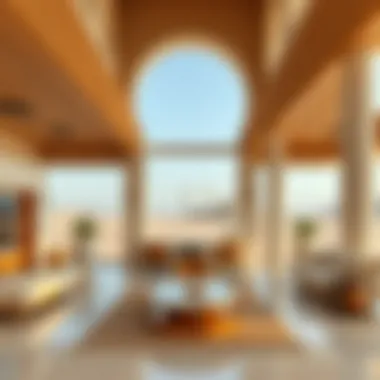
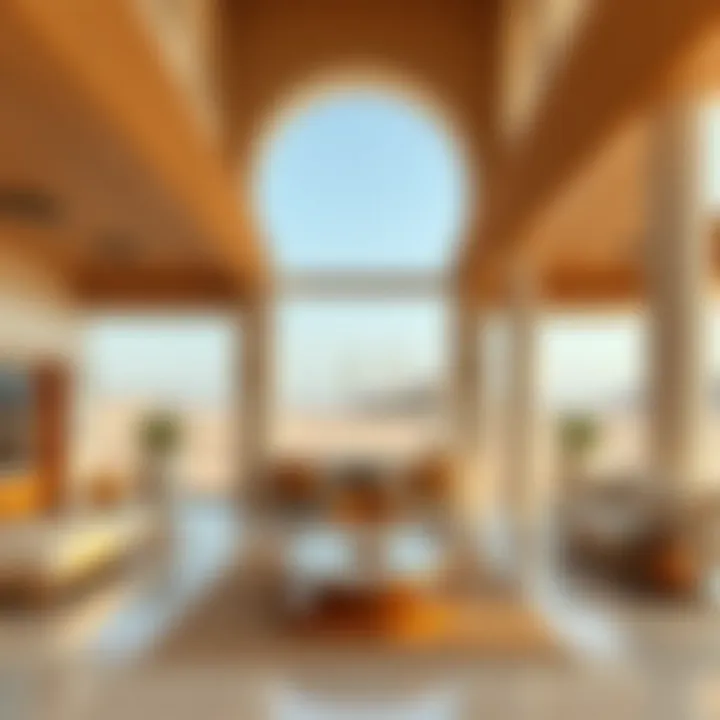
The significance of the Liwa region extends beyond its geographical boundaries; it plays a pivotal role in the broader context of the United Arab Emirates’ ambitious vision for sustainable growth and development. As part of the UAE's initiative to diversify its economy and promote cultural heritage, Liwa stands out as a beacon of potential for future investments and development strategies. Its unique combination of rich cultural heritage, fertile lands, and strategic positioning makes it a key player in the national agenda.
Sustainable Development Goals
Liwa's development aligns closely with the UAE’s commitment to sustainable development goals (SDGs). These goals aim to ensure economic growth while promoting social inclusivity and environmental protection. In Liwa, efforts are directed towards preserving traditional practices while also embracing modern technologies.
- Water Conservation: The aquifer systems in Liwa have raised concerns about sustainability, leading to initiatives focusing on water-saving techniques in agriculture. Techniques such as drip irrigation and scheduling planting according to seasonal variations are gaining traction.
- Renewable Energy: The UAE's vision also emphasizes clean energy. Liwa's potential to harness solar energy is being explored, as vast open spaces can accommodate solar farms. Implementing solar panels on local infrastructures can significantly reduce carbon footprints.
- Heritage Preservation: To align with cultural aspects of the SDGs, community-led projects are crucial. Local festivals and heritage events showcase traditional crafts and local cuisine, hence promoting tourism while keeping cultural identity intact.
"In Liwa, the fusion of tradition with modernity is not just an ideal; it's becoming reality."
Role in National Economy
Liwa's evolution is also tightly interwoven with the national economy's aspirations. As the UAE aims to shift from oil dependence to a more diversified economy, Liwa is crucial in facilitating this change.
- Agricultural Hub: Liwa's fertile land is ripe for agricultural development. The added focus on agriculture can provide not just food security for the UAE but also create job opportunities.
- Tourism Boost: With its striking landscapes, the Liwa region is an attractive destination for both local and international tourists. Ecotourism initiatives and infrastructure upgrades can turn Liwa into a major tourism hub, stimulating the local economy.
- Investment Opportunities: For investors and developers, Liwa offers promising avenues in real estate, agriculture, and tourism. The government’s backing for diversified economic policies enhances the attractiveness of investments in this region.
In summary, Liwa's future prospects are intricately linked to the UAE’s overarching vision. By focusing on sustainable development and integrating cultural heritage with economic growth, Liwa is not merely a passive region—it's an active participant in the UAE's transformation journey.
Challenges Facing Liwa
The Liwa region, while rich in cultural and natural assets, faces challenges that need addressing for its sustainable development. Understanding these challenges is vital for current and prospective stakeholders, including investors, homeowners, and expatriates. Acknowledging the environmental concerns and economic vulnerabilities is crucial for making informed decisions regarding participation in Liwa’s development.
Environmental Concerns
Liwa is characterized by its stunning landscapes, but this beauty conceals an array of environmental issues. The region is primarily desert, with limited water resources, making it vulnerable to the effects of climate change. Water scarcity has escalated, stressing both domestic and agricultural needs. With the global climate unpredictability, Liwa faces an increased risk of droughts, which can devastate local agriculture and push communities to their limits.
Additionally, the balance between development and conservation poses a growing concern. As more investment pours into the region, habitats may face destructive pressures. Protecting endangered species and preserving the delicate ecosystem of Liwa should take precedence in discussions about future projects.
"Preserving the natural habitat is not merely a choice; it is an imperative for sustaining Liwa's unique ecological identity."
Key environmental concerns:
- Water scarcity due to minimal rain and high evaporation rates.
- Land degradation from unsustainable development practices.
- Threatened local wildlife due to urban expansion.
Addressing these concerns offers significant benefits. Sustainable practices can attract eco-conscious investors, which will ultimately lead to a healthier community and environment in Liwa.
Economic Vulnerabilities
The economic landscape of Liwa, while showing promise, has its share of vulnerabilities that can impact the long-term growth of the region. Although oil and gas resources are a major contributor to the economy, over-dependence on these resources creates uncertainty. Fluctuations in global oil prices can spur economic instability, making it critical for local businesses to diversify.
In addition, a lack of infrastructure, especially in rural areas, can hinder business operations. Smaller enterprises may struggle to meet supply chain demands due to inadequate transportation networks, deterring investment.
These economic challenges are further exacerbated by a sometimes unpredictable labor market. Skilled labor shortages can lead to delays in project completion and result in increased costs for developers.
Points of economic vulnerabilities include:
- Dependence on global oil markets for economic stability.
- Insufficient infrastructure impeding growth.
- Labor market instability affecting project timelines.
By identifying and addressing these vulnerabilities, stakeholders can work towards reinforcing Liwa's economic foundation and attractiveness for future investments.
The landscape of Liwa is not without its hurdles, but acknowledging and addressing these challenges can transform them into opportunities. For every problem, there is a pathway to enhance the region’s economic stability and environmental safety.
Future Prospects of Liwa
The Future of Liwa is a subject that encapsulates both the optimism and the challenges faced by the region. As the world gears up for a changing landscape in terms of sustainability and economic diversification, Liwa stands at a crossroads. For investors, the attention on this area is not merely a flash in the pan; rather, it reflects the region's strategic importance in the broader context of the UAE. Understanding the future prospects of Liwa is crucial for investors, homeowners, expatriates, agents, and developers who wish to navigate these emerging opportunities.
Potential for Investment
Liwa is fast becoming a focal point for investment, driven by several key factors. The region’s natural beauty and archaeological significance are attracting both local and foreign developers, who see potential in eco-tourism and heritage preservation. The Emirati government has also rolled out incentives for foreign investors, making it easier to enter the market.
- Government Initiatives: Several programs aimed at bolstering private investment are in place. The UAE government is keen to diversify its economic portfolio away from oil dependency. You can find more about these strategies on the UAE government's official website or resources like UAE Ministry of Economy.
- Infrastructure Development: The infrastructure in Liwa is set to see considerable improvement, with new roads and utilities expanding access to remote areas. This can lead to better profitability for real estate developers, who can establish new residential and commercial projects in previously overlooked locales.
- Cultural Preservation: Investors who have an interest in culture can benefit from the local heritage projects, aimed at both preserving traditional practices and promoting them as tourist attractions. Investing in such projects not only ensures returns but also contributes positively to the community’s cultural fabric.
"Investing in Liwa today is about seizing the opportunities that tomorrow's landscape will offer."
Predictions for Growth
Growth predictions for Liwa hinge on several intertwined factors, including socio-economic trends and demographic shifts. Analysts and local experts are keeping a close eye on these signals, suggesting a couple of key trends that will shape the future.
- Increased Population Density: With urban centers in the UAE experiencing rapid growth, there is likely to be spillover into less urbanized areas like Liwa. This can result in increased demand for housing, schools, and hospitals.
- Tourism Expansion: The momentum behind eco-tourism and adventure tourism seems to be gaining traction. Liwa's vast desert landscapes offer unique opportunities for outdoor activities, which can serve as a magnet for both local and international tourists. Over time, tourism development can stimulate job creation and economic diversification.
- Sustainable Practices: Future developments in Liwa may heavily lean towards sustainability. As global awareness concerning environmental issues rises, areas like Liwa can showcase innovative building techniques and green energy solutions, positioning themselves as forward-thinking locales.



